And how to find them.
by Nicholas Lund, Contributor, Audubon Magazine

Wrens aren’t our flashiest birds, but they more than make up for it with their big personalities. Small and brown, they rarely sit still, whether vigorously defending their nests and territories, pecking for food on the forest floor, or just incessantly chattering away. They’ll get into shouting matches and physical confrontations with interlopers, including much larger species and humans, and even destroy eggs of other birds. In other words, wrens don’t mess around.
They’re also loud. Really loud. Sometimes what you hear is the aggressive notes of defensive breeders, but wrens are also known for their beautiful songs. There’s a lot of variety in American wrensong, from the rapid-fire fluting of the Winter and Pacific Wrens to the distinctive cascade of the Canyon Wren. When there’s a wren around, you’ll know it.
And there probably is a wren around, no matter where in America you are. We’ve got 10 wren species scattered around the country, and I want to help you find the ones closest to you.
But before we get to specifics, let’s quickly cover how to look for your wrens. Listen first. Like I said, wrens make a lot of noise both singing and yelling at other birds to get off their lawns. Next, look down. Wrens are insect eaters for the most part and spend their time on the ground or close to it in trees and bushes searching for prey. Finally, look carefully. The plumage of most all of our wrens is brown and white. Many have brown backs and lighter undersides, some are just brown all over. Their plumage is often intricate if you are able to study it—featuring barring or spotting—but they rarely sit still enough for a prolonged look.
Okay, now that we covered that, let’s talk about which species you’re looking for. I am going to break this down geographically, so feel free to skip down to the sections that cover your part of the country.
EVERYWHERE BUT ALASKA AND HAWAII
House Wren

House Wrens are found all over the country, wintering in the Southeast and along our southern border but breeding across the lower 48 and into Canada. The House Wren is arguably the drabbest of the family, but their ability to live near humans (they’re named House Wrens for a reason) means that they’re a visible companion in many summer yards. Check Cornell’s NestWatch website to learn how to attract them to your neighborhood.
Marsh Wren

Marsh Wrens, on the other hand, prefer more isolated, marshy habitats. (As you’ll soon notice, the people who named the wren species were not very creative.) Marsh Wrens are mostly migratory, spending the breeding season mainly in the northern half of the country and wintering in the southern areas and along the coast. Listen for their high-pitched mechanical chatter in marshes with long grass, and look for them performing complicated gymnastic moves as they grasp swaying marsh grass.
THE WEST
Rock Wren
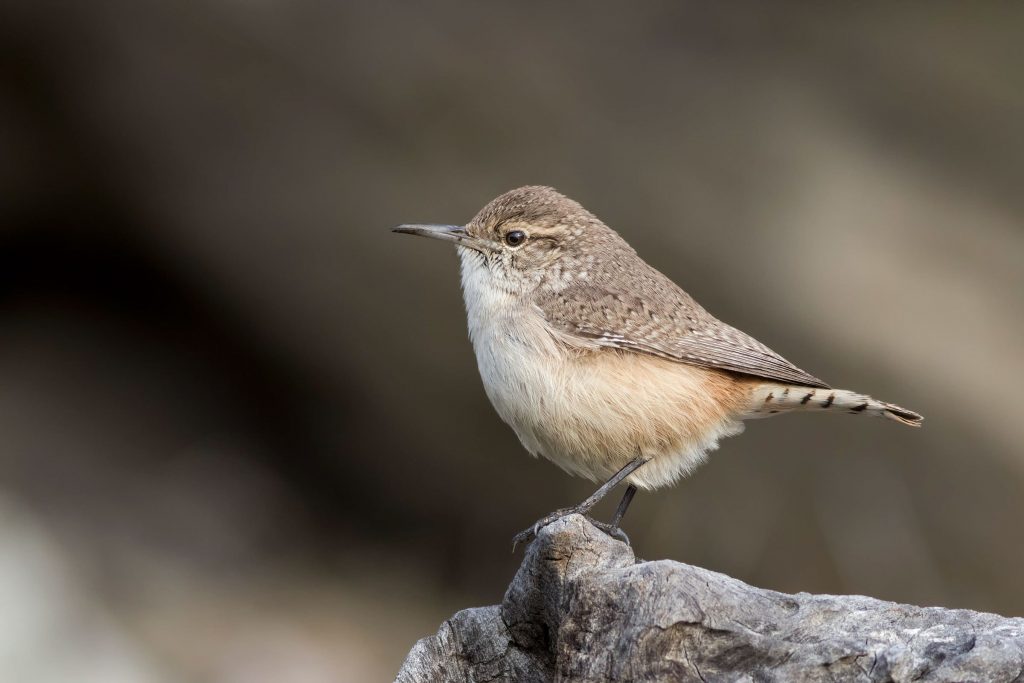
The Rock Wren is an open-country bird, larger than most wrens, that is usually found near—wait for it—a bunch of rocks. They can be found from the eastern Midwest all the way to the Pacific Coast. Another drab little wren, Rocks blend in very well with their habitat, so listen for their metallic pit-TEE! call in appropriate areas. Once you find one, watch them execute cute, deep knee-bends and pivots as they survey their surroundings.
Canyon Wren
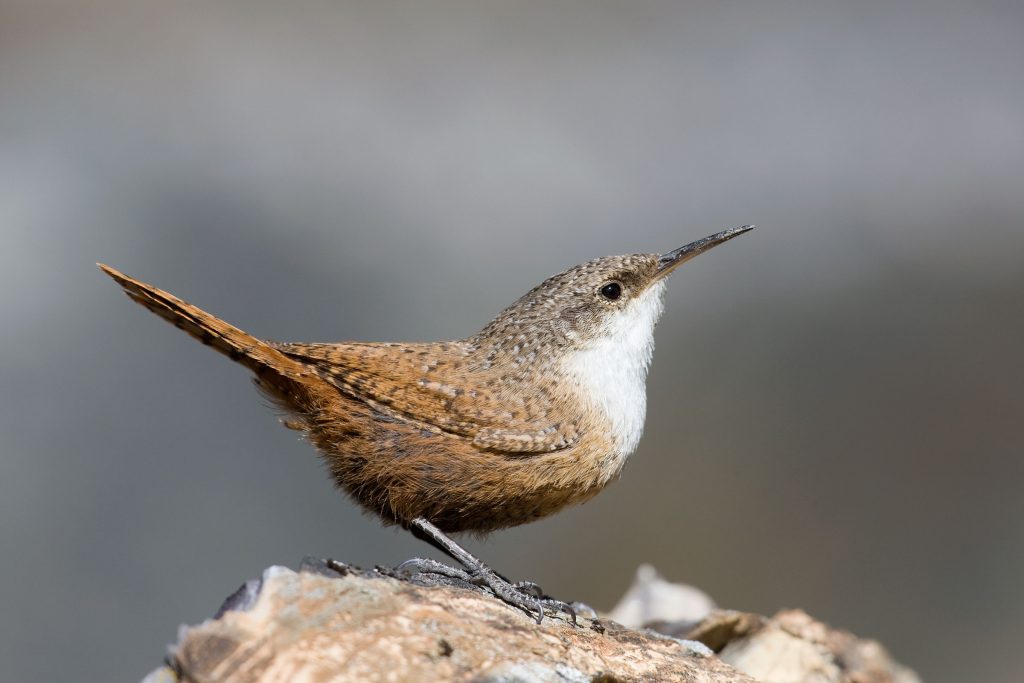
Perhaps the most dramatic of all wrens is the Canyon Wren. They clamber along cliff faces, using their long bill and flattened head to reach deep into crevices for insects. They’re perhaps our most colorful wren, with a rufous belly and gray head contrasting with a snow-white throat. But Canyon Wrens are most often heard before they’re seen, and the sound of their cascading call echoing off rock cliffs is a sure sign you’re in the Rocky Mountain West.
Pacific Wren
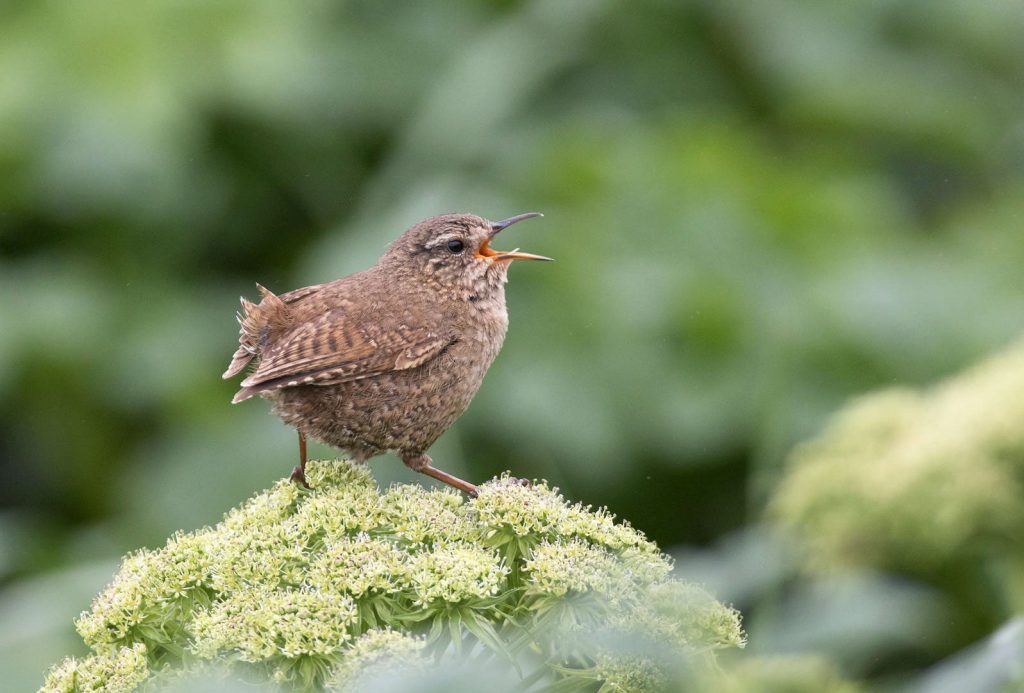
Our smallest and darkest wren is the Pacific Wren, only recently recognized as a distinct species apart from the eastern Winter Wren. The Pacific is found all up and down the coast, from southern California to the Aleutian Islands (it’s Alaska’s only breeding wren). They’re tiny and mouselike, seen bouncing along dark, damp areas like streambanks and under fallen logs. Like the Winter Wren, Pacifics have an incredibly rapid call, sounding like . . . let’s see . . . a tiny elf playing Flight of the Bumblebee on the violin. Just trust me on that.
Bewick’s Wren
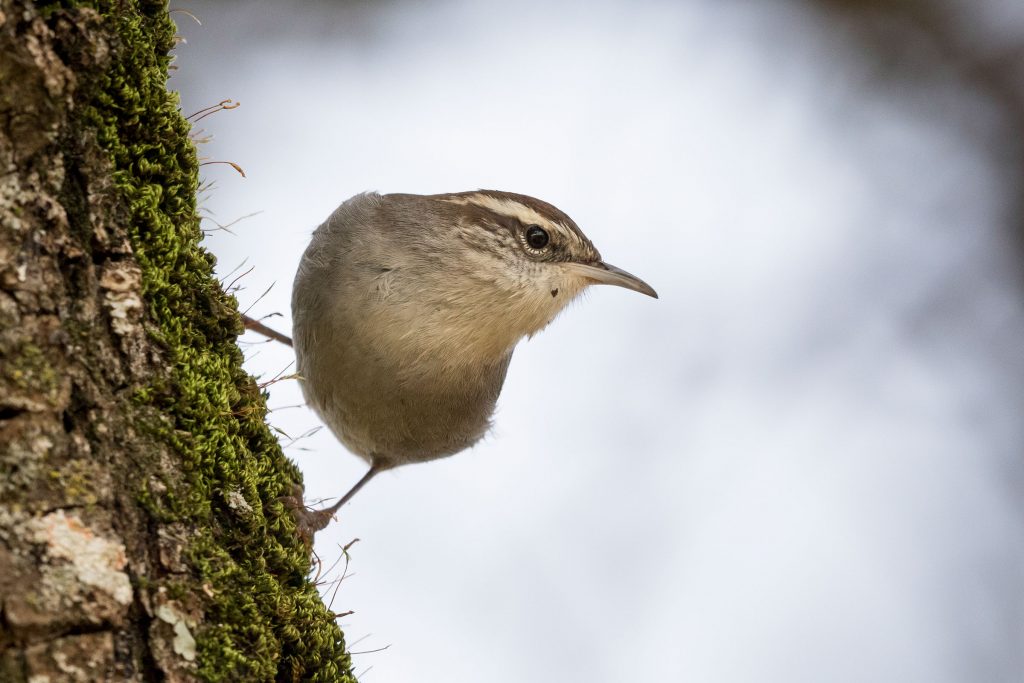
All wrens have a habit of cocking their tails, but none so dramatically as the Bewick’s Wren. This species will flick and wave and fan its long tail as it chases prey through the undergrowth. Slightly smaller overall than the eastern Carolina Wren, Bewick’s has a brown back and a bold white stripe over the eye. Look for them in scrubby habitat from Oklahoma across the Southwest and up the coast to Washington.
Cactus Wren

Our largest wren is the long-tailed Cactus Wren. Found—surprise!—in arid, cactus-strewn habitats in the Southwest, the Cactus Wren is intricately patterned with a long white eyebrow and a splattering of breast spots. Their gruff and unmusical chattering call is synonymous with the desert southwest, and whether you know it, you’ve probably heard it in the background of a Western movie.
CENTRAL / SOUTHEAST
Sedge Wren
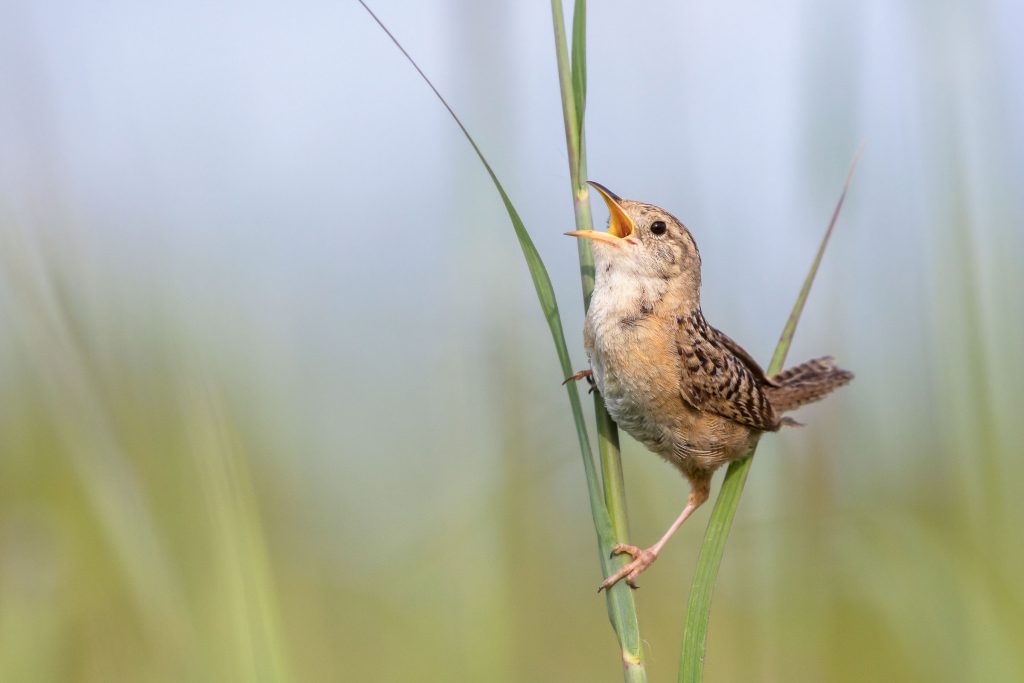
The Sedge Wren, in my experience, is the most difficult wren to find. It’s preferred habitat of damp meadows and grassy marshes is being lost, and its skulking ways mean it’s hard to track down even when nearby. Listen first for its halting chatter and then hopefully you’ll get a look at the intricate patterning and barring on the bird’s back and tail. You can find them breeding in the Great Lakes states and wintering in the Southeast.
Carolina Wren

Unlike Sedge Wrens, you won’t have to spend much time searching for the bright and energetic Carolina Wrens. Their clean white eyebrow is a giveaway marking if you get a look, but you’ll likely hear them first: Carolinas are some of the most familiar and persistent noisemakers of all Eastern birds.. Their song is easily remembered using the mnemonic “teakettle, teakettle,” or, as I prefer, “cheeseburger, cheeseburger!” Their oft-repeated down-slurred call note can be heard from miles away, it seems. Traditionally a resident of the Southeast, Carolinas are expanding their range in all directions.
EAST
Winter Wren
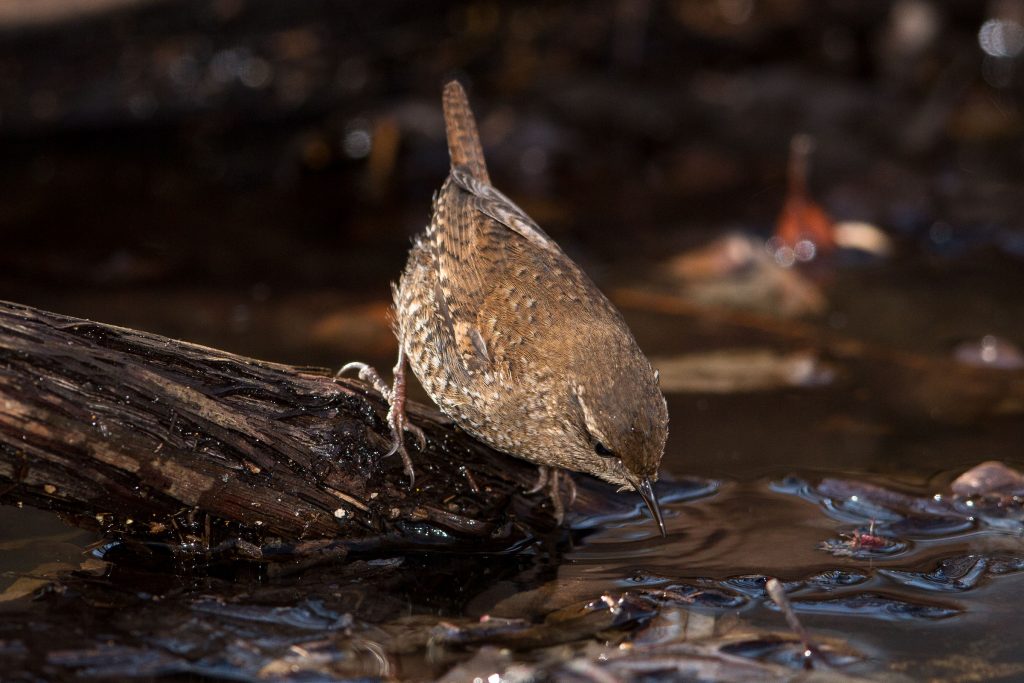
Finally, the Winter Wren, which is found all year long down the Appalachians and otherwise migrates between New England and much of Canada and the Southeast. It is similar in all ways to the Pacific Wren: Tiny and dark, it creeps along forest floors like a little puffball. Look for its stubby cocked tail as it bounces around the understory, and listen to its rapid call, which this time I’ll describe as . . . hmmm . . . a mouse’s VCR fast-forwarding a tape. For anyone reading this under, say, 30 years old, here’s what a fast-forwarding VCR sounds like. We’re learning all kinds of things today, aren’t we?

Contributor, Audubon Magazine
Nicholas Lund lives and birds in southern Maine. He is the outreach and network manager for Maine Audubon and runner of The Birdist blog.